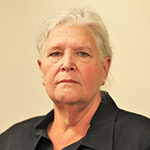Valley Construction digs into its second century
Jennifer DeWitt
John Deere leapt onto the tech world’s biggest stage last year, unveiling its groundbreaking self-driving tractor to rave reviews from surprised tech leaders at the 2022 Consumer Technology CES show in Las Vegas.
Just one year later, Deere & Co. Chairman and CEO John May delivered the keynote address spotlighting Deere’s ongoing progress in robotics and artificial intelligence (AI) at the gathering that…

Get immediate, unlimited access to all subscriber content and much more.
Learn more in our subscriber FAQ.
Do you want to read and share this article without a paywall?
